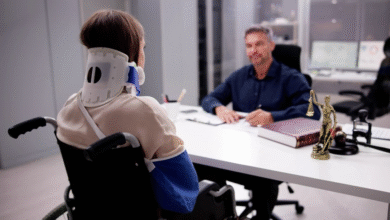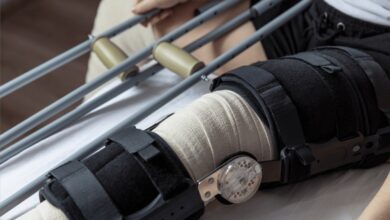Long-Term Recovery After Catastrophic Injuries: A Comprehensive Guide
Catastrophic injuries change lives forever. Learn how to navigate recovery, secure legal help, and find support with an experienced Austin catastrophic injury attorney.

Catastrophic injuries don’t just create short-term medical emergencies—they transform the entire landscape of life for victims and their families. The journey following such trauma involves adapting to sudden, life-altering changes, with each step presenting emotional and logistical obstacles. In the aftermath, navigating the complexities of rehabilitation, technology, financial planning, and mental health support is essential for forging a path forward. This process is rarely straightforward; families and victims alike often face uncertainty, the burden of constant decision-making, and the need to address both long-term physical consequences and invisible psychological wounds. Early on, seeking guidance from an Austin catastrophic injury attorney can help ensure that your recovery’s legal and financial aspects are addressed with expertise, giving you the best chance to focus on healing and rebuilding your life. Experienced legal advocates can facilitate access to resources, fight for compensation, and provide a steady hand through a chaotic process.
This comprehensive guide explores each key phase of long-term recovery, offering families practical insight on adjusting to new realities, accessing support, and establishing a foundation for physical and emotional independence. Being proactive in each area helps injured individuals and their loved ones overcome the initial crisis and lay a solid groundwork for future stability and personal growth.
Understanding Catastrophic Injuries
Catastrophic injuries refer to severe physical harm with long-lasting or permanent disabilities, profoundly limiting daily activities and independence. These are not just typical injuries that heal over time; they require extensive care and lifestyle redesign. Common examples include traumatic brain injuries, spinal cord damage resulting in paralysis, amputations, multiple severe fractures, organ damage, and extensive burns. Depending on their nature and severity, such injuries often necessitate extensive medical intervention and ongoing rehabilitation, impacting every aspect of a person’s life from mobility and communication to employment and social integration. The ripple effect touches immediate family, friends, and even the broader community as everyone adapts to new routines and levels of support required.
The journey to acceptance and adaptation begins with this understanding—recognizing that daily living will look very different, and acknowledging the interconnectedness of physical, emotional, and environmental factors in the months and years ahead. Many families benefit from education about potential complications, realistic recovery timelines, and what to expect moving forward in the rehabilitation process.
Immediate Medical Care and Its Costs
Urgent, lifesaving measures and complex medical care mark the initial phase after a catastrophic injury. Victims frequently require ambulance transportation, emergency surgery, trauma care, and specialized interventions in intensive care units. Immediate stabilization is necessary to prevent further harm and sustain vital functions. These interventions, necessary for stabilizing life-threatening conditions, come with steep costs that can quickly become overwhelming. Every minute in an ICU, every complex procedure, and each diagnostic test adds to the mounting expenses.
Even beyond the hospital stay, follow-up procedures, wound management, infection prevention, and purchasing special medications can contribute to significant financial pressure for families. The true extent of these costs may remain unknown for weeks or even months after injury, forcing families to balance the urgency of care with anxiety about financial security. Health insurance and state aid can sometimes help, but they rarely cover all expenses, making early financial planning critical.
Long-Term Rehabilitation Strategies
After the immediate crisis, rehabilitative therapy becomes the cornerstone of recovery, often lasting months or even years. Individualized rehabilitation plans typically blend multiple therapies, each aimed at maximizing independence and adapting to changed abilities. The rehabilitative phase is dynamic, requiring ongoing evaluation, flexibility, and often an interdisciplinary team approach. Collaboration among medical professionals, families, and patients helps set achievable goals and track progress holistically. Essential rehabilitation therapies may include:
- Physical therapy: Builds strength, improves coordination, and restores mobility; focus areas often include muscle re-education, joint protection, and mobility retraining.
- Occupational therapy: Teaches adaptive techniques for daily tasks such as dressing, eating, and using assistive devices for home and workplace activities, helping patients regain as much autonomy as possible in a new context.
- Speech and language therapy: Assists with communication, swallowing, and, if necessary, alternative forms of expression, supporting those with speech losses due to neurological trauma.
- Cognitive rehabilitation: Focuses on memory, concentration, and processing skills following brain injury. Such therapies are crucial in restoring executive function and enabling return to studies or work whenever possible.
- Psychological support and counseling: Addresses adjustment, mood disorders, grief, and motivation, allowing individuals to process the emotional consequences and build coping strategies.
- Pain management and medication: Helps control chronic pain and spasticity, often using a mix of pharmaceutical and alternative therapies, as pain can be a barrier to participating in rehabilitation.
- Specialty therapies: Aquatic, respiratory, vision, and nutritional therapies are tailored to individual deficits and offer additional support where needed.
Regular reassessments ensure the rehabilitation plan evolves as abilities improve, making the process dynamic and responsive. Re-evaluating goals and strategies encourages progress, combats stagnation, and provides hope. Consistent feedback and encouragement can help patients push through setbacks and celebrate incremental victories.
Adaptive Technologies and Home Modifications
Technological advances have revolutionized recovery and quality of life after catastrophic injuries. For many, technology acts as a bridge back to greater independence, making tasks possible that were previously inaccessible. The appropriate selection of assistive devices requires expert evaluation by rehabilitation specialists and is often tailored to current and anticipated future needs. Key areas include:
- Mobility: Selecting and maintaining motorized and manual wheelchairs, prosthetic limbs, exoskeletons, and safe patient transfer systems can be challenging. Choosing the proper fit ensures both comfort and safety for the user.
- Communication: Eye-tracking devices, speech generating devices, adaptive apps, and specialized computer input tools can be transformative, especially for those with severe paralysis or speech impairments.
- Home modifications: Accessible bathrooms and kitchens, ramps, lifts, automated door openers, and smart home integration for hands-free operation allow for safer, easier day-to-day living. Modifications should be thoughtfully designed to maximize both usability and personal dignity.
- Personal care aids: Custom feeding utensils, dressing assistance tools, adaptive grooming supplies, and safety rails can restore a sense of normalcy and control over daily routines.
Ongoing consultation and equipment upgrades ensure accessories continue to meet evolving needs. As abilities change, so must the tools that enable daily life, making it vital for families to revisit their adaptive strategies regularly and seek feedback from users and caregivers to ensure comfort and effectiveness.
Emotional and Psychological Support
The emotional impact of catastrophic injuries extends far beyond the victim, affecting families and caregivers as well. Feeling grief for lost abilities, anxiety about the future, and frustration with slow progress are normal. Coping with trauma from a sudden, life-altering event may require years of emotional processing and can manifest as anxiety, depression, or post-traumatic stress disorder (PTSD). Accessing mental health support—such as counseling, psychiatric care, and peer support groups—can provide crucial tools for managing these feelings, processing trauma, and finding hope in the face of adversity. Psychological care should start early and continue as needed throughout the recovery cycle, supporting not only the survivor but also spouses, children, and anyone in a close caregiving role. Encouraging open communication and emotional expression aids the entire family’s healing journey. Resilience can be built over time, and connecting with others who understand these unique experiences, including members of support communities, empowers families to feel less isolated and more resourceful.
Financial Planning and Legal Considerations
The actual cost of a catastrophic injury can be staggering, encompassing not just medical and rehabilitation fees but also lost wages, future care expenses, and the need for ongoing assistance. The family may also need to account for lost career advancement or changes in housing to accommodate new physical needs. Navigating insurance claims, government benefits, and legal compensation is often complex. Working with specialized attorneys helps ensure individuals access the full spectrum of support they are entitled to, easing long-term financial strain and securing resources for continued care. Attorneys focusing on catastrophic injury cases are equipped to advocate for the injured party’s rights and clarify options that may otherwise remain hidden. This planning is foundational to both immediate recovery and future security. Comprehensive financial support ensures survivors can remain focused on therapy and regaining independence, rather than becoming overwhelmed by bills and paperwork. Consulting with certified financial planners and exploring charitable or nonprofit resources, when needed, may lead to additional support.
Community Integration and Support Systems
Rejoining the community—whether returning to work, education, or social circles—can present additional hurdles for catastrophic injury survivors. Rehabilitation extends into this realm, providing training and support for adapting to new environments and expectations. Survivors may need to learn new skills, social cues, and strategies for overcoming inaccessibility or stigma. Forging new social connections, engaging in adaptive recreational opportunities, and remaining active in community life dramatically enhance quality of life and help combat isolation. Local support groups and nonprofit organizations offer resources that can be indispensable for both survivors and families. These organizations may provide advocacy, educational materials, transportation options, or financial assistance for adaptive devices. By creating networks with others who share similar challenges, survivors and their families gain a sense of belonging and hope, helping rebuild confidence and optimism for the future.
Conclusion
Long-term recovery from catastrophic injuries is a challenging, multi-faceted journey requiring coordinated care across medical, emotional, technological, financial, and social realms. There is no one-size-fits-all solution, and each survivor’s path to recovery will be distinct, shaped by unique needs, strengths, and circumstances. By accessing comprehensive rehabilitation, leveraging adaptive technologies, prioritizing emotional health, and tapping into legal and community resources, survivors and their families can take meaningful steps toward a more independent and fulfilling future. Through persistence, collaboration, and support, brighter days can gradually, but steadily, emerge.











